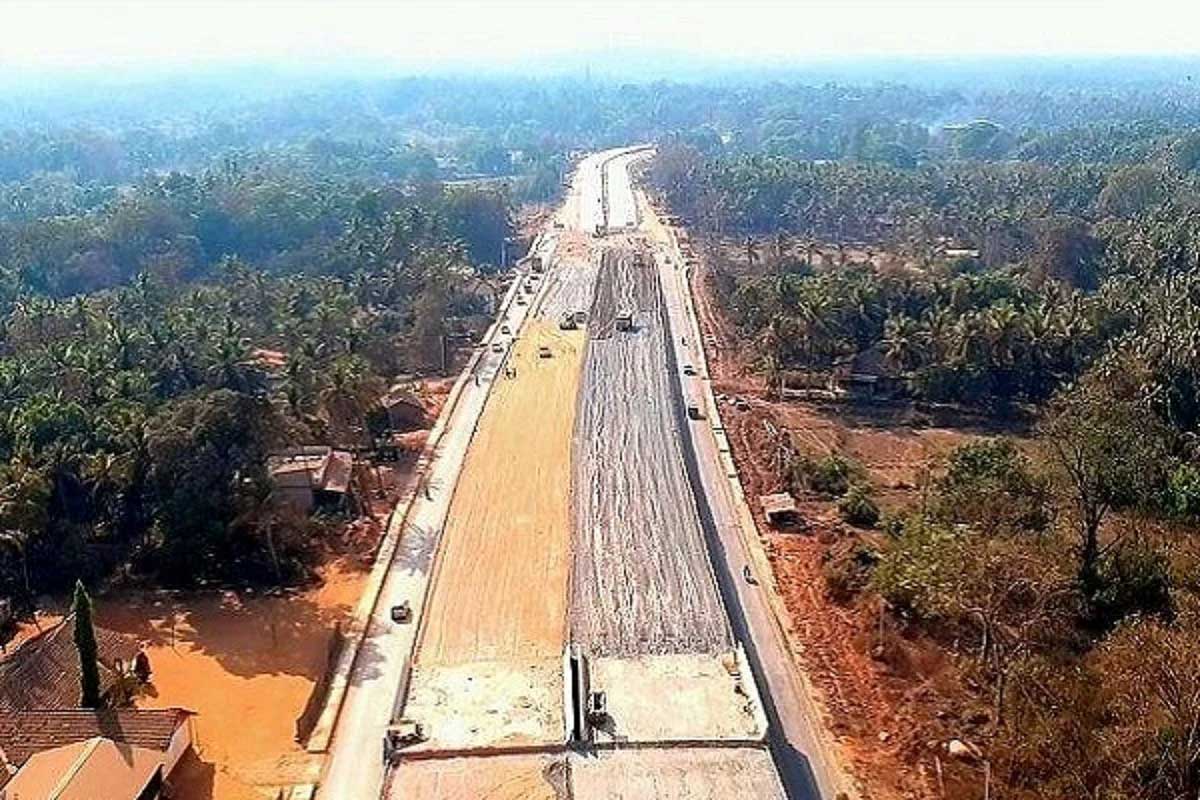From a record 37 km per day in 2020-21, the pace of National Highway construction slowed to 20.43 km a day during the first four months of 2022. Considering this, it is natural to question the feasibility of the Indian Government’s plan to augment the pace of construction to 50km a day. CW takes a closer look…
India is home to the world's second-largest road network. In the next five years, the Ministry of Road Transport and Highways (MoRTH) wants to complete 60,000 km of NH at an average daily construction rate of 40 km. Clearly, we need to pull up our socks to achieve this. Moreover, the target now is to attain 50 km a day. With an average construction cost of about Rs 30 crore per kilometre (including land acquisition costs) and a conservative inflation rate of 3 per cent for road-building costs, the total funding requirement over five years to attain this target will entail a good deal of investment from the Government.
That said, Anshumali Srivastava, Chief General Manager – Mumbai, National Highways Authority of India(NHAI), believes we are pretty much on track as far as investments are concerned. “Road investment is increasing year on year [YoY]. In 2022-23, roads have seen the highest ever investments with Rs 2.15 lakh crore. Moreover, the banks have taken an interest in the sector. Due to InvITs, funding is easily available. Further, the National Infrastructure Pipeline [NIP] has been laid out for the next five years, which provides assurance to the market.”
Cyclones, the monsoon and the secondary effect of COVID-19 did affect the pace of land acquisition because of which road construction has slowed down.But the construction of four, six and eight-lane National Highways has shot up by 300 per cent in the past seven years. So, despite the appalling effect of the pandemic, getting back to building 50km per day is not a far-fetched idea.
Keeping in mind that land acquisition continues to remain a key challenge,the Government has decided not to award any contracts until 80 per cent of land acquisition is already complete. Moreover, a good deal of political will is also getting things done. A prime example is the Maharashtra Samruddhi Mahamarg – 95 per cent of the land acquisition for the highway was completed in four-and-a-half months unlike the Mumbai-Pune Expressway where acquisition of 50-60 per cent of the land required took 18 months to complete and another two years was spent in acquiring the remaining land while construction was on.
We should also consider the pace at which four and six-lane highways are being constructed when we deliberate upon the pace of road construction. In fact, it also acts as testimony to the level of innovation that has seeped into the sector.“Lane km need to be taken into account rather than just km alone as we are building more four l and six-lane roads rather than just two-lane roads, which we were doing six years ago,” reasons Atul Bhobe, Managing Director, TPF Engineering.“Further, the talent pool that was building 6km a day years ago has not increased; the same set of people are now building almost five times more nowadays. This has been facilitated by digitisation. So, in clear terms, we have innovated a lot in terms of using lesser manpower and precise machines to get the job done. More and more quality protocols are now automated. Digitisation of land records has been done in record time, which has made land acquisition faster. Today, a DPR [detailed project report] can be completed in nine months, which is proceeding as per the defined schedule. Further, operational maintenance contracts ensure the roads designed are maintained.”
In view of the targets, the Government has done much more than catalyse the process of land acquisition. MoRTH and NHAI have given contractors a free hand to select the right kind of equipment and technology to scale up the pace of construction. Moreover, contractors do not have to part with the savings made as a part of the process, which consistently motivates them to innovate and use the latest machines, equipment and technologies. “Use of new technology in road construction is a reality,” avers Ramesh Palagiri, Managing Director & CEO, Wirtgen India. “One example would be the use of the mobile feeder for contactless paving. Such machines are already being used in the Bharatmala project, augmenting the pace and quality of construction while reducing the cost. Soil stabilisation is also helping to reduce the use of aggregates, not only in National Highways but rural roads. Inline pavers have also come into play. Going forward,the use of ‘construction execution solutions’ will increase and play an important role in the future of road and highway construction.”
Construction execution solutions may be relatively a newer term to grasp but it basically involves a series of machines and equipment interconnected to each other. In the age of telematics, such solutions have been designed to automate the process of road construction further and reduce the scope of human error. Akin to machines that execute data-driven processes, in such machines the layout of the road, its current status and the final finish desired is fed into the system, after which the interconnected machines start performing the task in a sequential manner. In a sector that is getting increasingly digitised to reduce its dependency on manpower, such solutions will play an important role in meeting the existing target of 50 km a day as well as the future targets as and when altered.
To speed up the pace of road construction,often the trend is to overlook numerous factors and clearances that, going further, have a long-term impact on the ecosystem. However, such issues are getting their due regard, which will ensure that we have set out on a path of not just development but development that is all inclusive. “If you look at the Delhi-Mumbai Expressway project we are associated with,” says Hardik Agarwal, Director, Dineshchandra R Agarwal Infracon, “it is designed for daily commuters, urban connectors, city users, the logistics sector and many more. In executing the project, we obtained numerous environmental clearances including some for the animal sanctuaries that come in between. This itself indicates that we have moved to a phase of inclusive development and it also shows that our capability lies not just in amounts of money spent or kilometres built but in taking the nation forward together.”
In conclusion, if all the stakeholders in the road construction segment work together,building 50 km a daycould be doable. And considering that rapid urbanisation has led to building efficient roads and highways within expanding cities as well, India has actually done quite a good job. The 50 km target vis-à-vis what has been done between the mainland cities and their ever-expanding peripheries also highlights the need to take note of the demand graph in the roads and highways sector. Thus, it is fairly safe to say that roads and highways, which cater to a multitude of needs and sectors, will develop –sooner than later.





















